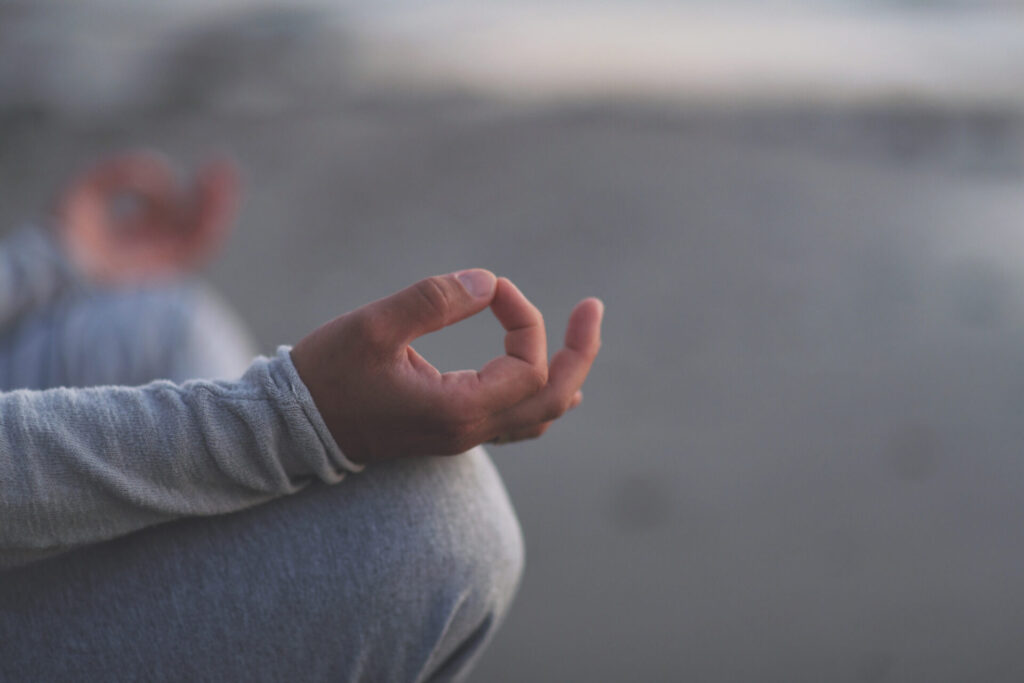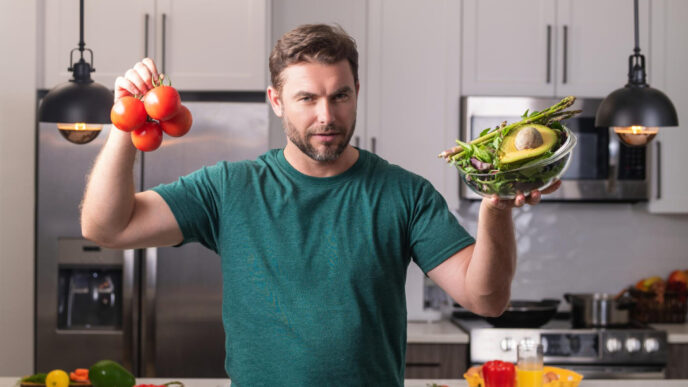Why Cravings Feel So Urgent—and How to Regain Control
We’ve all been there: one moment you’re fine, and the next, a sudden craving hits you like a wave—strong, unexpected, and hard to resist. Whether it’s the urge to light a cigarette, eat something sugary, or pour a drink, cravings don’t just come out of nowhere. They’re fast, overwhelming, and often deeply tied to both your brain chemistry and emotional state.
But here’s the truth—cravings are temporary, and they can be managed. With the right tools and awareness, you can stop cravings instantly or at least weaken their grip long enough to make a better choice. And the faster you act, the easier it becomes to break their cycle.
⚠️ Cravings Aren’t Just “In Your Head”
Cravings feel urgent because your brain has learned to associate certain behaviors with quick relief. Over time, this creates a pattern that feels automatic—stress leads to a smoke, boredom leads to snacking, social anxiety leads to drinking.
This isn’t about weakness—it’s neurobiology. Dopamine, cortisol, and habit loops create powerful internal signals, and that’s why cravings can be so hard to ignore. But with the right approach, you can cut cravings fast without relying on willpower alone.
✳️ The Goal: Fast Relief and Long-Term Change
This guide offers a double-layered strategy:
✔️ Fast-acting methods to help you interrupt cravings in the moment
✔️ Long-term tools to reduce how often cravings show up in the first place
Whether you’re seeking natural ways to reduce cravings, trying to stop cravings instantly, or exploring how to deal with cravings without giving in, you’ll find practical, science-backed steps that work.
“You don’t need to be stronger than the craving.
You just need to be smarter than the pattern.”
Let’s break it all down—starting with why cravings happen and what’s really going on when they suddenly take over.

Understanding Cravings
Cravings are not just fleeting thoughts; they are powerful urges driven by a complex interplay of brain chemistry, emotions, and habitual behaviors. To effectively reduce and manage cravings, it is essential to understand their underlying mechanisms.
The Science Behind Cravings
Cravings originate in the brain, primarily in the reward system, which is responsible for pleasure, motivation, and reinforcement. The key players in this system include:
- Dopamine: Often referred to as the “feel-good” neurotransmitter, dopamine is released when we engage in pleasurable activities, such as eating, smoking, or drinking. Addictive substances and behaviors hijack this system, creating an artificial surge of dopamine. Over time, the brain starts associating certain cues with reward, leading to cravings.
- Glutamate: This neurotransmitter strengthens the connection between a stimulus (e.g., seeing a cigarette) and the reward (e.g., nicotine rush). This is why cravings can be triggered by specific places, smells, or even emotional states.
- Cortisol: Stress can amplify cravings by increasing cortisol levels, which, in turn, intensify the desire for substances that provide temporary relief.
Cravings often follow a cue-response-reward cycle:
- Cue – A trigger (e.g., stress, a social setting, or a specific time of day) activates a craving.
- Response – The person engages in the addictive behavior (e.g., smoking, drinking, or eating junk food).
- Reward – The brain receives a pleasurable response, reinforcing the cycle.
Overcoming cravings involves disrupting this cycle by addressing triggers, changing responses, and finding healthier rewards.
Psychological and Emotional Triggers
Cravings are not just biological; they are also heavily influenced by psychological and emotional factors. Some common triggers include:
- Stress and Anxiety: Many people turn to addictive substances as a coping mechanism. When stress levels rise, the brain seeks relief, often through familiar substances.
- Boredom: The absence of stimulation can create a craving for excitement or pleasure, leading people to seek comfort in food, nicotine, or alcohol.
- Social Cues: Being around certain people or environments associated with the addiction can trigger cravings. For instance, someone trying to quit smoking might feel an intense urge to smoke when they see a friend lighting a cigarette.
- Emotional Associations: Many addictions are linked to emotions. Some people drink to escape sadness, smoke to relieve frustration, or eat sugary foods to feel comforted.
Understanding these triggers is the first step toward developing personalized strategies to combat cravings. By recognizing the cues that spark cravings, individuals can take proactive steps to break free from their grip.
In the next section, we will explore targeted strategies to cut cravings, including how diet, hydration, and sleep play crucial roles in reducing urges.

Targeted Strategies to Cut Cravings
Managing cravings effectively requires a combination of physiological, psychological, and behavioral strategies. The key is to weaken cravings at their root while developing healthier habits that promote long-term control. Below are science-backed methods to target cravings and reduce their intensity.
Nutritional Adjustments
What you eat plays a crucial role in managing cravings. Certain foods stabilize blood sugar levels, reduce stress hormones, and support brain chemistry to make cravings less intense.
1. Balance Blood Sugar to Prevent Cravings
Unstable blood sugar levels can lead to intense hunger and cravings, especially for sugary and processed foods. Here’s how to keep your levels steady:
✔️ Increase protein intake – Protein slows down digestion and keeps you full longer, reducing the likelihood of sudden cravings. Sources: eggs, lean meats, fish, legumes, tofu.
✔️ Eat healthy fats – Omega-3 fatty acids help regulate dopamine levels, improving mood and reducing cravings. Sources: salmon, walnuts, flaxseeds, avocados.
✔️ Choose fiber-rich foods – Fiber slows glucose absorption, preventing energy crashes that can trigger cravings. Sources: whole grains, beans, vegetables, berries.
✔️ Avoid refined sugars – Processed sugar causes blood sugar spikes followed by crashes, increasing cravings for more sugar.
2. Use Nutrients That Reduce Cravings
Certain vitamins and minerals help control cravings by regulating brain chemicals:
| Nutrient | Function | Sources |
|---|---|---|
| Magnesium | Reduces sugar cravings | Spinach, almonds, dark chocolate |
| Chromium | Stabilizes blood sugar | Broccoli, whole grains, nuts |
| Zinc | Balances dopamine | Pumpkin seeds, chickpeas, meat |
| L-Glutamine | Curbs sugar and alcohol cravings | Meat, eggs, dairy |
| Vitamin B Complex | Supports brain function and mood | Leafy greens, whole grains, eggs |
By incorporating these nutrients into daily meals, cravings can be naturally reduced over time.
Hydration and Detoxification
Dehydration is often mistaken for cravings, leading people to reach for snacks or addictive substances instead of water. Staying hydrated is one of the simplest ways to minimize cravings.
1. Drink Water Before Giving In to a Craving
When you feel a craving, drink a large glass of water and wait 10–15 minutes. In many cases, the craving will subside.
✔️ How much water? Aim for at least 8–10 glasses per day, or more if you’re active.
✔️ Electrolytes help – If plain water feels unsatisfying, add a pinch of sea salt or drink coconut water for better hydration.
2. Use Herbal Teas to Reduce Cravings
Some teas help control appetite and stabilize mood, making them excellent craving fighters:
- Peppermint tea – Reduces sugar cravings and improves digestion.
- Licorice root tea – Naturally sweet, it satisfies sugar cravings without calories.
- Ginger tea – Helps detox the body and reduce inflammation.
Hydration is a simple but effective strategy that directly influences craving intensity.
Sleep and Its Impact on Cravings
Lack of sleep increases cravings by affecting the hormones that regulate hunger and self-control. Poor sleep raises ghrelin (hunger hormone) and lowers leptin (fullness hormone), making cravings harder to resist.
1. Improve Sleep Quality to Cut Cravings
✔️ Stick to a schedule – Going to bed and waking up at the same time stabilizes hormones.
✔️ Limit screens before bed – Blue light from phones disrupts melatonin production, making it harder to sleep.
✔️ Reduce caffeine in the afternoon – Stimulants stay in your system for hours, affecting sleep depth.
2. Power Naps as a Craving Hack
If cravings hit due to exhaustion, a 20-minute nap can reset the brain and reduce urges. Many people mistake fatigue for hunger or cravings—resting instead of eating can be an effective alternative.
Physical Activity as a Craving Reducer
Exercise is one of the most powerful craving blockers because it releases endorphins, natural feel-good chemicals that help combat addiction urges.
✔️ Cardio exercise (running, cycling, swimming) reduces cravings by lowering stress hormones.
✔️ Strength training (weights, resistance exercises) helps balance dopamine, making cravings less intense.
✔️ Yoga and stretching lower cortisol (stress hormone), reducing stress-related cravings.
Even a short 5-minute workout can disrupt a craving. The next time a craving hits, try jumping jacks, a brisk walk, or stretching to shift focus and reduce the urge.
Mindfulness and Stress Reduction Techniques
Since stress is one of the top craving triggers, learning to manage it effectively can drastically reduce cravings.
1. Deep Breathing to Stop Cravings Instantly
When a craving strikes, use the 4-7-8 breathing method:
1️⃣ Inhale through the nose for 4 seconds.
2️⃣ Hold the breath for 7 seconds.
3️⃣ Exhale slowly through the mouth for 8 seconds.
This activates the parasympathetic nervous system, lowering stress and calming the craving.
2. Meditation and Visualization
✔️ Guided meditation apps (Calm, Headspace) provide quick stress relief.
✔️ Visualization techniques – Imagine yourself craving-free and in control, reinforcing positive behavior.
3. Use the “Delay and Distract” Technique
Cravings peak within 10–15 minutes and then subside. If you can delay responding, they often pass.
✔️ Set a 15-minute timer – Engage in an activity (reading, a puzzle, or cleaning) to shift focus.
✔️ Chew gum or eat a healthy snack – This provides oral stimulation without feeding the addiction.
By combining these targeted strategies, cravings can be dramatically reduced in both frequency and intensity. Next, we will explore behavioral approaches that reinforce self-control and help prevent cravings from returning.

Behavioral Approaches to Control Cravings
While physical strategies like nutrition and exercise play a crucial role in managing cravings, behavioral changes are equally essential. By rewiring habits, identifying triggers, and using mental techniques, individuals can significantly reduce cravings and regain control over their actions.
The Role of Habit Formation
Cravings are often tied to deeply ingrained habits. The more a habit is repeated, the stronger the connection becomes in the brain. To break the cycle of addiction, it’s necessary to replace old patterns with healthier alternatives.
1. The “Cue-Routine-Reward” Method
Behavioral scientist Charles Duhigg outlines that habits follow a predictable cue-routine-reward loop:
✔️ Cue – A trigger initiates the craving (stress, boredom, social setting).
✔️ Routine – The habitual behavior follows (smoking, eating junk food, drinking).
✔️ Reward – The brain receives pleasure, reinforcing the habit.
To break bad habits, replace the routine while keeping the cue and reward the same:
- Example: If stress makes you crave cigarettes (cue), switch the routine from smoking to a breathing exercise or a short walk. The reward (relief) remains, but the habit changes.
2. Use “Implementation Intentions”
Psychologists suggest using “If-Then” statements to reprogram automatic behaviors:
✔️ “If I feel the urge to snack at night, then I will drink a glass of water first.”
✔️ “If I crave a cigarette after coffee, then I will chew gum instead.”
By creating pre-planned responses, cravings become easier to manage.
Identifying and Avoiding Triggers
Many cravings occur automatically in response to specific triggers. The key to long-term control is identifying and minimizing these triggers whenever possible.
1. Keep a Craving Journal
Writing down cravings helps reveal patterns and identify personal triggers. Each time a craving strikes, record:
✔️ Time & Place – When and where did the craving occur?
✔️ Emotional State – Were you stressed, bored, anxious?
✔️ Trigger – Was it a smell, a situation, a person?
✔️ Action Taken – Did you resist or give in?
By tracking patterns, it becomes easier to predict and prevent cravings before they occur.
2. Modify Your Environment
If certain situations increase cravings, adjust your surroundings:
✔️ Remove temptation – Keep junk food, cigarettes, or alcohol out of reach.
✔️ Change routines – If morning coffee triggers smoking, switch to tea or change locations.
✔️ Surround yourself with support – Avoid people or places that encourage bad habits.
Even small environmental changes can make a big difference in craving control.
The Power of Distraction and Substitutes
Since cravings typically last only 10–15 minutes, finding ways to distract yourself can help prevent giving in.
1. The “15-Minute Rule”
When a craving hits:
1️⃣ Set a timer for 15 minutes.
2️⃣ Engage in an alternative activity – Walk, journal, clean, play a game.
3️⃣ Reassess after the timer ends – Most cravings will have weakened or disappeared.
This delays impulsive actions, giving the brain time to process and override the urge.
2. Use Sensory Substitutes
Replacing the physical sensation of addiction with a non-harmful alternative can reduce cravings.
| Craving Type | Effective Substitutes |
|---|---|
| Smoking | Chew gum, drink herbal tea, use a straw |
| Sugar | Eat fruit, drink flavored water |
| Alcohol | Try kombucha, sparkling water, or mocktails |
| Emotional eating | Squeeze a stress ball, chew crunchy veggies |
By keeping healthy substitutes readily available, it becomes easier to break automatic craving responses.
Reframing the Mindset Around Cravings
Cravings often feel urgent and uncontrollable, but shifting your mindset can help regain control.
1. Recognize That Cravings Are Temporary
Cravings feel powerful in the moment, but they always pass. Reminding yourself:
✔️ “This craving will be gone in 15 minutes.”
✔️ “I have resisted before, and I can do it again.”
✔️ “Every craving I overcome makes me stronger.”
This reinforces the belief that you are in control, not the craving.
2. Use the “Surfing the Urge” Technique
Instead of fighting cravings, observe them without acting:
1️⃣ Acknowledge the craving (“I notice I want a cigarette right now”).
2️⃣ Describe it without judgment (“It feels like tension in my chest”).
3️⃣ Watch it fade naturally (“The craving is getting weaker”).
This technique, based on mindfulness and acceptance therapy, reduces the power of cravings over time.
By applying behavioral approaches, cravings can be weakened and replaced with healthier habits. Next, we will discuss the importance of support systems and accountability in overcoming addiction.
References and Inspirational Resources
- Duhigg, Charles. The Power of Habit: Why We Do What We Do in Life and Business. Random House.
- Brewer, Judson. The Craving Mind: From Cigarettes to Smartphones to Love – Why We Get Hooked and How We Can Break Bad Habits. Yale University Press.
- Psychology Today – Articles on cravings, stress-related eating, and habit formation.
- Harvard Health Publishing – “How to tame your cravings,” evidence-based guidance on behavioral and nutritional strategies.
- National Institute on Drug Abuse (NIDA) – Resources on addiction science, triggers, and relapse prevention.
- Centers for Disease Control and Prevention (CDC) – Guidelines on healthy habits and behavioral health.















